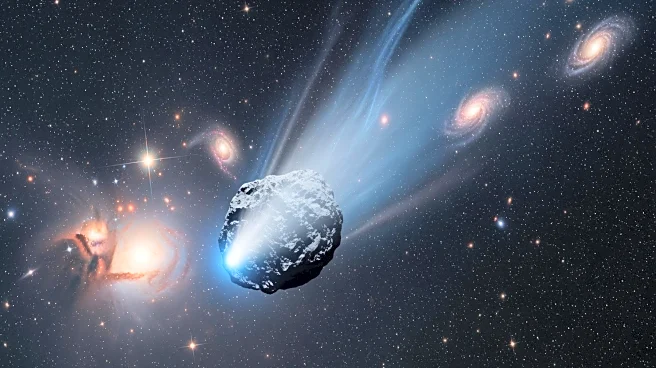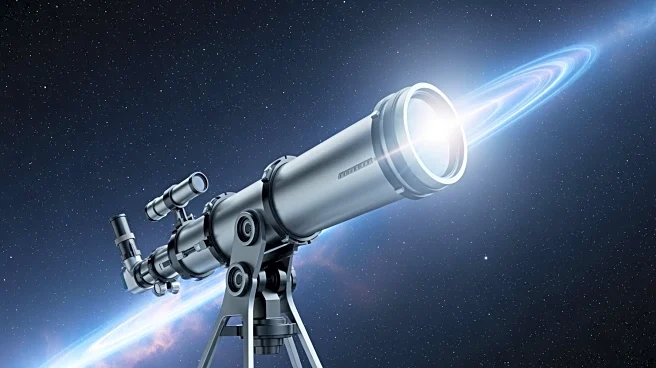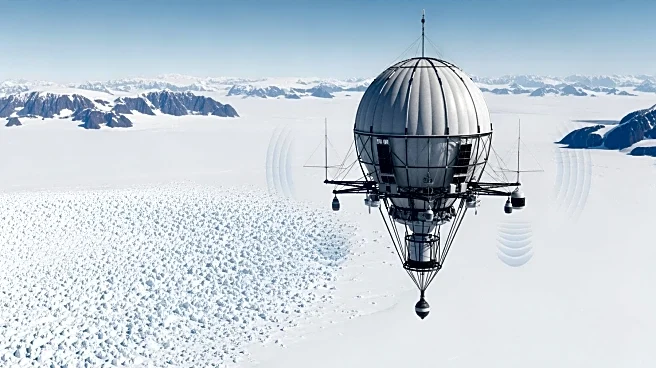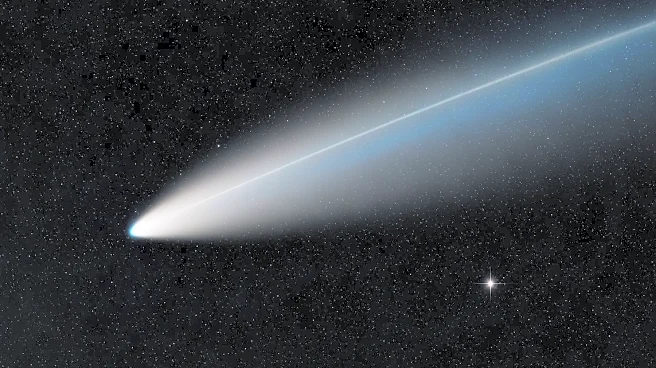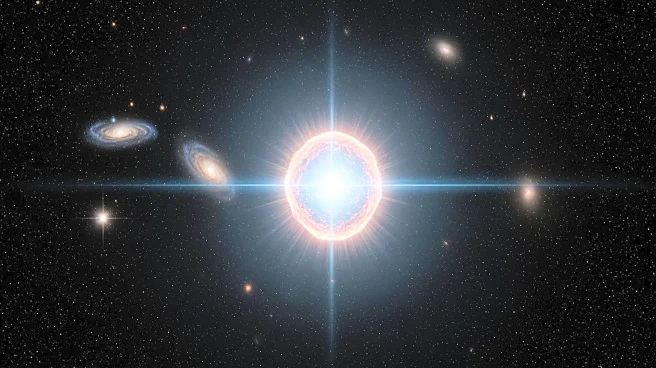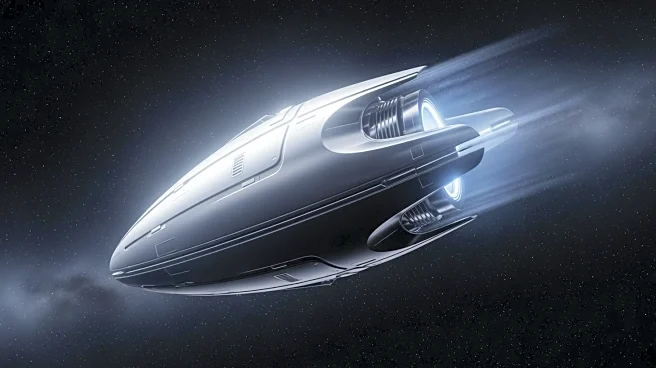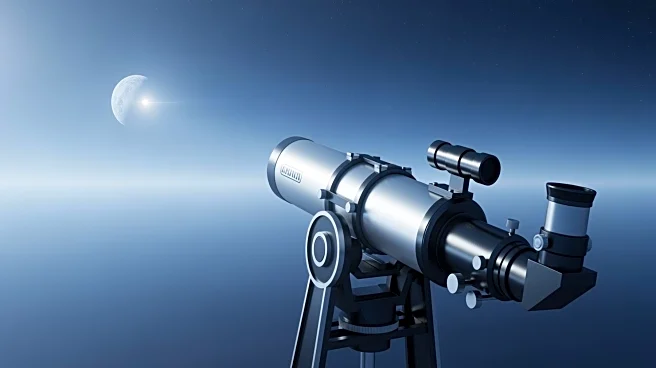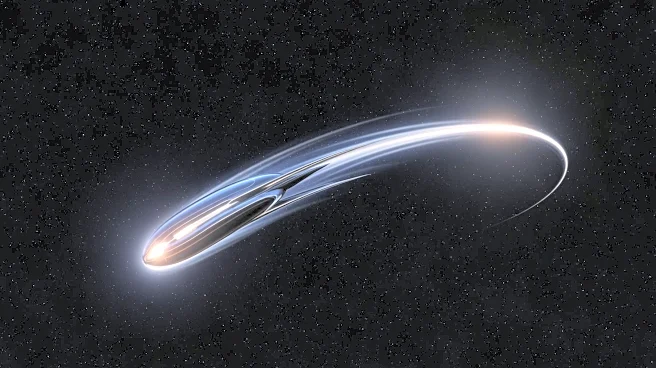What's Happening?
Recent data from NASA's Jet Propulsion Laboratory and the Minor Planet Center reveal new insights into the interstellar object 3I/ATLAS following its perihelion passage. The object has brightened significantly
and exhibits non-gravitational acceleration, suggesting mass loss. The trajectory and composition of 3I/ATLAS continue to intrigue scientists, with anomalies such as its retrograde trajectory and unusual gas composition challenging existing models.
Why It's Important?
The study of 3I/ATLAS offers a rare glimpse into interstellar objects, potentially reshaping understanding of cosmic phenomena and particle physics. The object's behavior may provide clues about the nature of interstellar travel and the processes affecting celestial bodies. This research could influence future exploration strategies and scientific theories regarding the universe's composition.
What's Next?
Scientists plan further observations to determine the object's nature and composition. Spectroscopic analysis may reveal whether 3I/ATLAS is a natural comet or something more unusual. The findings could lead to new theories about interstellar objects and their interactions with solar systems, prompting further research and exploration.
Beyond the Headlines
The anomalies associated with 3I/ATLAS highlight the challenges of understanding interstellar phenomena and the limitations of current scientific models. Ethical considerations regarding data transparency and collaboration are emphasized, as researchers seek to share findings and advance collective knowledge.


